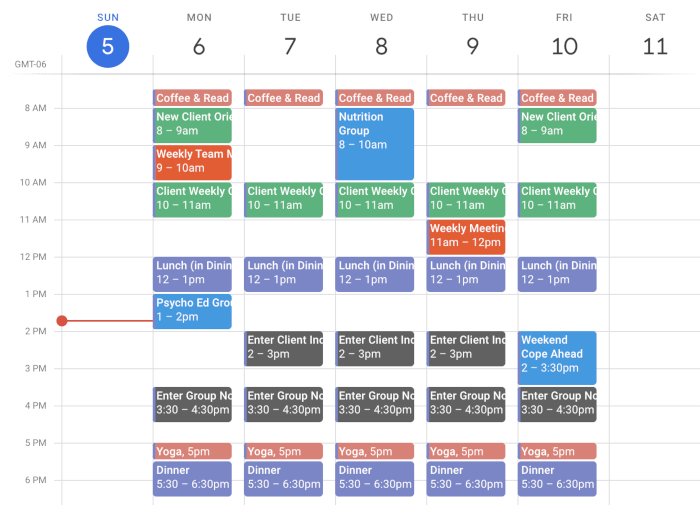Calculate Your Meeting’s True Cost: Free Tool & Strategy Guide
That “quick” team meeting scheduled for 15 minutes? It just cost your company $487. The weekly status update with 12 people? That’s $2,340 down the drain. While most businesses obsess over cutting office supply costs, they’re bleeding money through inefficient meetings that could fund entire projects.
A meeting cost calculator isn’t just another productivity tool—it’s a financial wake-up call that reveals the true expense of corporate collaboration. When you multiply hourly salaries by meeting duration and participant count, the numbers become impossible to ignore. The average knowledge worker spends 37% of their time in meetings, yet studies show that 67% of employees report having too many meetings.
Understanding your meeting costs transforms abstract time into concrete dollars, making it easier to justify changes that seemed impossible before. Whether you’re a team leader trying to streamline processes or an executive looking to boost organizational efficiency, calculating meeting costs provides the data-driven foundation for meaningful change.
Why Most Companies Don’t Calculate Meeting Costs (And Why They Should)
Most organizations treat meetings as “free” because they don’t see a direct line item on their budget. Unlike travel expenses or software subscriptions, meeting costs are hidden within salary expenses, making them nearly invisible to decision-makers. This invisibility creates a dangerous blind spot where companies inadvertently waste thousands of dollars weekly.
The psychology behind this oversight runs deeper than simple accounting. Meetings feel productive because they involve collaboration and discussion, creating an illusion of progress even when little gets accomplished. Leaders often equate meeting frequency with team engagement, missing the opportunity cost of what employees could achieve with focused work time.
Cultural resistance also plays a significant role. Suggesting that meetings cost too much can feel like questioning collaborative culture or implying that team communication isn’t valuable. This creates a taboo around meeting cost analysis, even in organizations that rigorously track other expenses.
However, companies that embrace meeting cost calculation gain several competitive advantages:
- Improved decision-making through data-driven meeting policies
- Enhanced productivity as teams become more selective about necessary meetings
- Better resource allocation by identifying time-wasting patterns
- Increased profitability through reduced operational inefficiencies
The shift toward remote and hybrid work has made meeting cost calculation even more critical. Virtual meetings feel “cheaper” because there’s no conference room booking, but they often include more participants and run longer, actually increasing costs while reducing engagement quality.
The Hidden Financial Impact of Unnecessary Meetings
The financial drain from unnecessary meetings extends far beyond simple salary calculations. When a $100,000-per-year employee spends two hours in unproductive meetings, the company loses $96 in direct costs plus additional indirect expenses that multiply the true impact.
Opportunity cost represents the biggest hidden expense. Every hour spent in an unnecessary meeting is time not spent on revenue-generating activities, strategic planning, or skill development. For sales teams, this translates to fewer closed deals. For developers, it means delayed product launches. For managers, it results in less time for team development and strategic thinking.
Consider a mid-sized company with 100 employees averaging $75,000 annually. If each employee wastes just 30 minutes daily in unnecessary meetings, the annual cost reaches $900,000. That’s enough to hire 12 additional employees or fund major technology upgrades.
The context-switching penalty adds another layer of hidden costs. Research shows it takes an average of 23 minutes to fully refocus after an interruption. When meetings fragment work schedules, employees struggle to maintain deep focus, reducing overall productivity by up to 40%.
Meeting fatigue creates additional financial consequences through decreased engagement and higher turnover. Employees overwhelmed by meeting schedules report lower job satisfaction and are more likely to seek employment elsewhere. The cost of replacing a skilled employee typically ranges from 50% to 200% of their annual salary.
Quality degradation in decision-making also compounds meeting costs. When teams rush through important discussions due to meeting overload, they often make suboptimal choices that require expensive corrections later. This creates a vicious cycle where poor decisions necessitate more meetings to address problems.
How to Use a Meeting Cost Calculator Effectively
Using a meeting cost calculator effectively requires more than plugging in numbers—it demands strategic thinking about when and how to apply the insights. Start by identifying your calculation methodology. Most calculators use a simple formula: (average hourly rate × number of participants × meeting duration) + overhead costs.
Accurate salary data forms the foundation of meaningful calculations. Use fully-loaded costs that include benefits, taxes, and overhead rather than base salaries. This typically adds 25-40% to the base salary figure. For mixed-level meetings, calculate each participant’s contribution separately rather than using averages.
Track meeting costs systematically rather than calculating them sporadically. Create a simple spreadsheet or use dedicated software to log recurring meetings, noting patterns in cost-per-outcome ratios. This historical data reveals trends that single calculations miss.
Pre-meeting cost calculations prove most valuable for changing behavior. Before scheduling any meeting, run the numbers and ask whether the expected outcome justifies the expense. This simple step eliminates many unnecessary meetings before they consume resources.
Consider these calculation best practices:
- Include preparation time in your calculations (typically 15-30% of meeting duration)
- Factor in follow-up time required to implement meeting decisions
- Account for the opportunity cost of interrupting focused work
- Track both direct costs and productivity impact
Real-time cost awareness can transform meeting dynamics. Some companies display running cost counters during meetings, creating immediate awareness of financial impact. While this might seem excessive, it consistently reduces meeting duration and improves focus.
Post-meeting analysis provides crucial feedback for improvement. Calculate cost-per-decision or cost-per-action-item to evaluate meeting effectiveness. This data helps identify which meeting types deliver value and which drain resources without corresponding benefits.
What Your Meeting Cost Calculator Results Actually Mean
Raw numbers from your meeting cost calculator tell only part of the story. A $500 meeting isn’t inherently good or bad—context determines whether that expense represents excellent value or wasteful spending. Understanding how to interpret results requires looking beyond the dollar figure to analyze cost-effectiveness and strategic value.
Cost-per-outcome analysis provides the most meaningful interpretation framework. A $1,000 meeting that prevents a $50,000 project failure delivers exceptional value. Conversely, a $100 meeting that produces no actionable outcomes wastes resources regardless of its modest cost.
Meeting frequency multiplies the significance of individual costs. A weekly $300 team meeting costs $15,600 annually—enough to fund professional development, team building, or technology upgrades. This annualized perspective often reveals expenses that seemed reasonable in isolation.
Comparative analysis helps establish organizational benchmarks. Track costs across different meeting types, departments, and leaders to identify patterns. High-performing teams often demonstrate lower meeting costs per project completion or revenue generated, suggesting more efficient collaboration methods.
Consider these interpretation guidelines:
- Under $200: Generally acceptable for routine coordination if outcomes are clear
- $200-500: Requires strong justification and specific deliverables
- Over $500: Should be reserved for strategic decisions or crisis resolution
- Recurring high costs: Signal process problems that need systematic solutions
Trend analysis reveals whether meeting costs are improving or deteriorating over time. Seasonal patterns, project phases, and organizational changes all influence meeting frequency and effectiveness. Understanding these cycles prevents overreaction to temporary spikes.
The ratio of meeting costs to project budgets provides crucial perspective. If a project’s meeting expenses exceed 10-15% of its total budget, the collaboration overhead likely outweighs the coordination benefits. This suggests a need for more asynchronous communication or streamlined decision-making processes.
Beyond the Numbers: Qualitative Costs Your Calculator Won’t Show
While meeting cost calculators capture financial expenses, they miss significant qualitative impacts that often exceed monetary costs. Employee morale suffers when teams feel trapped in endless, unproductive meetings. This degradation shows up in engagement surveys, retention rates, and overall team performance rather than direct financial calculations.
Creative productivity takes a substantial hit from meeting overload. Deep work—the focused, uninterrupted time essential for innovation and complex problem-solving—becomes impossible when schedules fragment into 30-minute blocks between meetings. The cost of reduced creativity and innovation is difficult to quantify but often represents the highest organizational expense.
Decision quality deteriorates when meeting fatigue sets in. Teams rushing through multiple meetings make suboptimal choices, approve projects without proper analysis, or delay important decisions entirely. These poor decisions create cascading costs that dwarf the original meeting expenses.
Relationship strain between team members intensifies when meetings become sources of frustration rather than collaboration. Employees begin to resent colleagues who call unnecessary meetings or fail to prepare adequately. This interpersonal tension reduces team effectiveness and creates workplace conflicts that persist beyond individual meetings.
Work-life balance suffers dramatically in meeting-heavy cultures. Employees often complete their “real work” outside regular hours, leading to burnout and turnover. The replacement costs for skilled employees typically range from $50,000 to $200,000, far exceeding the apparent savings from frequent meetings.
Strategic thinking becomes nearly impossible when leaders spend most of their time in operational meetings. This creates a vicious cycle where short-term tactical discussions crowd out long-term planning, resulting in reactive rather than proactive organizational management.
Customer impact represents perhaps the most serious qualitative cost. When teams are constantly in meetings, customer response times increase, product quality may decline, and innovation slows. These external effects can damage brand reputation and competitive position in ways that take years to repair.
Meeting Cost Calculator: Free Tool and Step-by-Step Guide
Creating your own meeting cost calculator requires just a few simple formulas that can be implemented in Microsoft Excel, Google Sheets, or any spreadsheet application. This step-by-step approach ensures accuracy while providing customization options for your specific organizational needs.
Step 1: Gather Essential Data
Collect average salary information for different employee levels in your organization. Include benefits and overhead costs (typically 25-40% of base salary). Create categories like junior staff ($35/hour), senior staff ($65/hour), and management ($95/hour) with fully-loaded rates.
Step 2: Build the Basic Calculator
Create columns for meeting duration, participant count by level, and additional costs. Use this formula structure:
- Total Cost = (Duration × Participant_Level1 × Rate1) + (Duration × Participant_Level2 × Rate2) + Overhead
- Include preparation time (typically 15-30% of meeting duration)
- Add opportunity cost factors for high-priority work interruptions
Step 3: Add Advanced Features
Include dropdown menus for common meeting types, automatic date tracking, and running totals for recurring meetings. Create annual projection formulas that multiply weekly or monthly meetings by appropriate factors.
Step 4: Implement Usage Tracking
Add fields for meeting outcomes, action items generated, and subjective effectiveness ratings. This qualitative data helps interpret cost calculations and identify improvement opportunities.
Essential calculator components include:
- Participant matrix: Different hourly rates for various employee levels
- Time factors: Meeting duration plus preparation and follow-up time
- Overhead allocation: Facility costs, technology expenses, and administrative support
- Opportunity cost: Estimated value of alternative work activities
- Frequency multipliers: Annual cost projections for recurring meetings
Step 5: Create Reporting Dashboard
Build summary views that show total meeting costs by department, meeting type, and time period. Include cost-per-outcome calculations and trend analysis to identify improvement opportunities.
Step 6: Test and Refine
Start with a few sample meetings to verify calculation accuracy. Adjust formulas based on organizational feedback and refine categories to match your specific needs.
Proven Strategies to Reduce Meeting Costs by 40% or More
Implementing strategic changes to meeting culture can dramatically reduce costs while improving outcomes. Organizations that systematically apply these proven strategies typically see 40-60% reductions in meeting expenses within six months of implementation.
Default to 15-minute meetings instead of 30-minute blocks. Most coordination discussions require far less time than standard calendar defaults suggest. This simple change forces presenters to prepare more thoroughly and participants to engage more actively, improving both efficiency and effectiveness.
Implement the “two-pizza rule” popularized by Amazon: if you can’t feed the meeting participants with two pizzas, the group is too large. Research confirms that meeting effectiveness decreases exponentially with group size. For most discussions, 3-5 participants prove optimal for both decision-making and cost control.
Establish “meeting-free” time blocks where employees can focus on deep work without interruption. Many organizations designate Tuesday and Thursday mornings as meeting-free zones, protecting 20-25% of the work week for concentrated productivity.
Require pre-meeting preparation with specific deliverables. Send agendas 24 hours in advance with required reading materials and expected participant contributions. This preparation investment reduces meeting duration and improves decision quality.
Use asynchronous communication for information sharing. Replace status update meetings with shared documents, project management tools, or recorded video updates. Reserve live meetings for discussion, decision-making, and problem-solving activities that require real-time interaction.
Create meeting-cost awareness by including calculated expenses in calendar invitations. When organizers and participants see the financial impact, they naturally become more selective about attendance and more focused during discussions.
Implement “standing meetings” literally. Research shows that standing meetings are 34% shorter than seated meetings while maintaining decision quality. The physical discomfort encourages efficiency without sacrificing thoroughness.
Establish clear decision-making authority to prevent endless discussion loops. Designate specific roles for decision-makers, advisors, and implementers. This structure prevents meetings from becoming debate societies without resolution.
Building a Meeting Cost-Conscious Culture in Your Organization
Transforming organizational culture around meeting costs requires systematic change management that addresses both behavioral patterns and structural systems. Success depends on leadership commitment, clear communication, and consistent reinforcement of new practices.
Leadership modeling proves essential for cultural transformation. When executives demonstrate meeting discipline by declining unnecessary invitations, keeping discussions focused, and calculating costs publicly, it gives permission for others to do the same. Middle managers often feel trapped between wanting efficiency and fearing they’ll appear uncooperative.
Education and training help employees understand why meeting costs matter and how to apply cost-conscious practices. Workshop sessions on effective meeting management, agenda creation, and decision-making frameworks provide practical skills that support cultural change.
Measurement and feedback systems reinforce behavioral changes through regular reporting on meeting costs and effectiveness. Monthly department summaries showing meeting expenses compared to outcomes create accountability without feeling punitive.
Recognition programs that celebrate meeting efficiency encourage continued improvement. Acknowledge teams that demonstrate significant cost reductions while maintaining or improving project outcomes. This positive reinforcement proves more effective than penalties for excessive meeting costs.
Structural changes support cultural transformation by making efficient meetings easier than inefficient ones. Calendar system defaults, meeting room booking policies, and expense reporting processes should all encourage cost-conscious behavior.
Policy development provides clear guidelines for meeting decisions:
- Mandatory cost calculations for meetings exceeding $500 or 5 participants
- Required justification for recurring meetings lasting more than 30 minutes
- Regular review cycles for standing meetings to evaluate continued necessity
- Alternative communication requirements before scheduling meetings
Change management techniques help overcome resistance to new practices. Address concerns about reduced collaboration, provide training on efficient meeting techniques, and demonstrate how cost consciousness improves rather than hinders team effectiveness.
Continuous improvement processes ensure that meeting cost awareness becomes embedded in organizational DNA rather than a temporary initiative. Regular surveys, focus groups, and performance metrics track cultural adoption and identify areas needing additional attention.
Conclusion
Understanding and managing meeting costs isn’t about eliminating collaboration—it’s about making every collaborative moment count. When organizations implement systematic meeting cost calculator practices, they consistently discover that reducing meeting expenses actually improves team productivity, employee satisfaction, and business outcomes.
The strategies outlined here provide a roadmap for transformation, but success requires commitment to consistent application. Start with cost calculations to understand your baseline, then gradually implement cultural changes that support efficient collaboration. Remember that the goal isn’t to minimize meetings at all costs, but to maximize the value derived from every dollar invested in team coordination.
Your organization’s meeting culture reflects its values and priorities. By making cost consciousness a core part of how you approach collaboration, you’re investing in a more productive, efficient, and ultimately more successful future. The time to start calculating and optimizing your meeting costs is now—your bottom line and your team will thank you for it.



